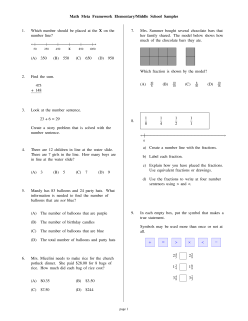EducAide Original
Mathematics Meta Framework
| Grade Levels | Elementary (K-5) | Middle (6-8) | High (9-12) | ||
| Subjects | Mathematics | Science | Social Studies | ELA | Other |
| Question Types | Multiple-Choice | Interactive | Short Answer | Free Response | Passage-based |
| Features | Paired Questions | Ordered by Difficulty | Spanish Translation |
| Number of questions: | 29,543 |
|---|---|
| Originally published by: | EducAide Software, the maker of Problem-Attic |
| Database organization: | Grades, Topics |
| Requires subscription: | Yes |
Samples
Design Highlights
- All questions are hand-written by highly qualified teachers and curriculum specialists. (They are not algorithm-generated or “crowd-sourced”.) In addition, they are carefully aligned, edited and reviewed by EducAide Software, the maker of Problem-Attic, which has 20 years of experience developing questions for state standards.
- The database is intended for both instruction and assessment. Alignment to the topics is as tight as possible while still allowing some flexibility for teaching, not just testing. While questions function very well for measuring student progress, some questions are included for challenge, extra credit, and extending ideas.
- Questions are aligned to only one topic. There is no duplication. For questions that can conceivably go with multiple topics, we went for the best fit. We also tried to keep similar questions together, so that it's not necessary to jump through multiple topics to find variations.
-
All questions are paired for easy pre- and post-testing,
makeup tests, etc. You will not notice this on the sample documents, but if
you visit the Play Area,
it will be apparent that two questions in-a-row are always similar. This
provides a nice balance between repetition and variety and also helps with
test security, as the two questions, which are close in difficulty and
style, can be assigned to different students and graded the same way.
- Problem-Attic has an option called “parallel forms” that takes advantage of the paired questions. You can very quickly create pre- and post-tests, makeup tests, forms A and B, etc. More details are here.
- The questions are rich with graphics and interesting scenarios, including real-world data. With the editor, you can use all of this as stimulus for new questions. The process is facilitated with a button in the editor labeled “Duplicate”. Also, Problem-Attic is smart enough not to repeat certain figures or text which is marked as an “intro”, if it appears in successive questions.
Notes
This bank is an aggregation of the standards-based questions— over 29,000. All the questions are original and included in a school subscription. They are organized topically.
We created the Meta Framework for several reasons:
- The topical organization provides a very convenient way of locating certain question types. Because math standards are often broadly worded, you might prefer the topics for day-to-day instruction or supplementing a textbook.
- Many states are adopting math standards which differ from Common Core. The Meta Framework should match up well with all of them. Though not specifically tied to grades, the topics should be familiar enough that you'll see the connection.
- The Meta Framework is a great companion for Problem-Attic's Framework Builder. The latter is a tool for re-aligning questions and creating/sharing your own database. For more information, please see this overview of curriculum development tools and these step-by-step instructions.
- The standards-based questions are not only combined in the Meta Framework, in many cases you'll see an improved version of them. We edited more than 1000 questions and added about 500 brand-new ones. Also, we converted thousands of questions to make them interactive, like multi-select and column-match.
